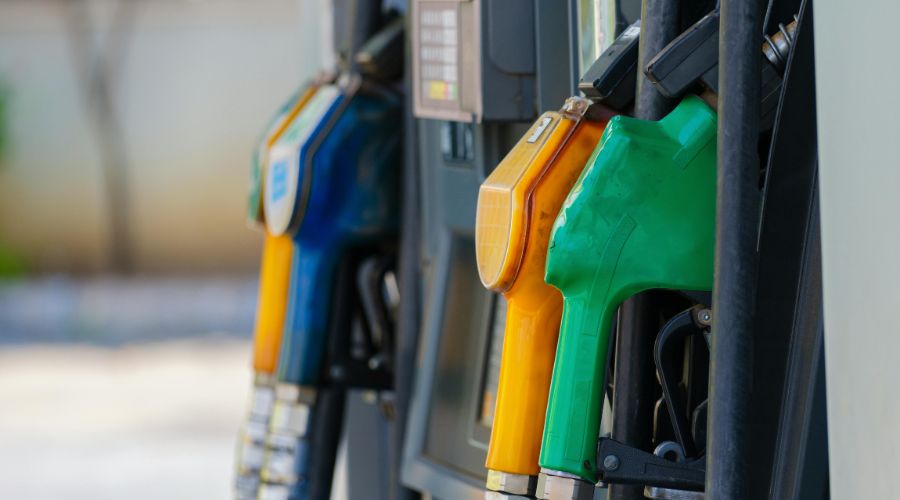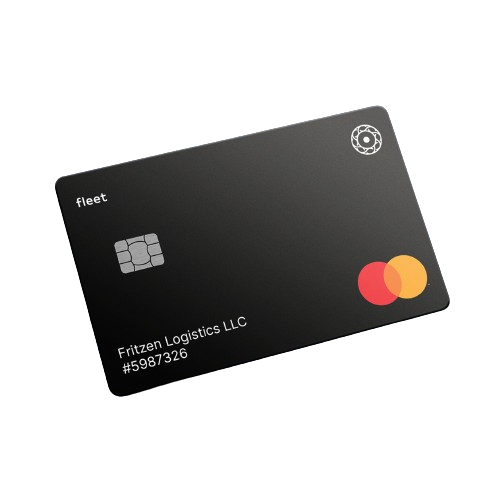Fleet fuel cards have become essential tools for trucking companies looking to manage fuel expenses and streamline operations. But knowing how to use a fuel card effectively is key to maximizing the benefits and cost savings these specialized cards provide.
This comprehensive guide walks you through everything you need to know about using fleet fuel cards—from basic setup to advanced features that can transform your fleet management approach.
Key Takeaways:
- Fleet fuel cards offer more than just a way to purchase fuel—they provide comprehensive expense management tools
- Using fuel cards properly can significantly reduce operating costs through fuel discounts and spending controls
- Most fuel card providers offer security features specifically designed for the transportation industry
- Not all fuel cards are created equal—choosing the right fuel card program can mean substantial differences in savings
- Proper setup and driver training are essential to maximize the benefits of your fuel card program
{{CTA}}
What Are Fleet Fuel Cards?

Fleet fuel cards are specialized payment tools designed specifically for transportation companies and owner operators. Unlike standard credit or debit cards, fuel cards are tailored to the unique needs of the trucking industry, offering features that help track fuel purchases, monitor spending, and access discounted fuel prices at participating stations and truck stops.
The right fuel card program serves as a comprehensive fleet management system, helping to control fuel costs while providing detailed insights into your fleet's operating expenses.
One highly recommended option for fleet owners is the Chevron Texaco gas card. This card provides extensive benefits such as fuel credits, participation in the Chevron Texaco rewards program, and enhanced fraud protection.
How Do Fuel Cards Work?
While most fuel cards aim to offer fleets discounted fuel prices, it's essential to note that not all fuel cards are created equal. This means that different fuel card providers may have different processes.
Generally speaking, however, you can use your fleet fuel card in one of two ways:
- As a credit card – In this scenario, the fuel card acts and functions the same way that a credit card would. When at the pump, the truck driver pays for their fuel using the line of credit associated with the card. Then, the balance is later paid off, similar to a monthly credit card bill.
- As a debit card – In this case, a trucking company can add funds to their drivers' prepaid fuel cards to help manage spending limits and keep fuel expenses in check.
How To Use Fuel Cards
Understanding how fuel cards work is the first step toward using them effectively. Here's a breakdown of the basic process:
Step 1: Application and Setup
To begin using a fuel card, you'll need to:
- Select a fuel card provider that best matches your business needs
- Complete an application (many providers offer options without extensive credit checks)
- Receive your cards (typically within 5-7 business days)
- Activate cards through the provider's online portal
- Assign cards to specific drivers and vehicles
During setup, you'll establish important parameters like spending limits, purchase restrictions, and reporting preferences. This initial configuration is crucial for getting the most out of your fuel card program.
Step 2: Making Fuel Purchases
When a driver needs to purchase fuel, they'll follow these steps:
- Pull into any authorized fuel station or truck stop (depending on the card's network)
- Insert the fuel card at the pump or present it to the cashier
- Enter required security information, which may include:
- Driver ID or driver number
- Vehicle unit number
- Current odometer reading
- Trip number (for some systems)
- Personal identification number (PIN)
- Select the appropriate fuel type (diesel fuel, regular gas, etc.)
- Pump fuel up to authorized limits
Many fuel card providers offer universal acceptance at major truck stops and gas stations, while others may restrict purchases to specific in-network locations where they offer deeper discounts.
Step 3: Transaction Processing
When a driver completes a fuel purchase, the fuel card system:
- Verifies that the transaction falls within established spending limits
- Captures detailed transaction data, including:
- Date and time
- Location
- Fuel type
- Price per gallon
- Total gallons purchased
- Total transaction amount
- Vehicle information
- Driver information
- Applies any applicable discounts automatically
- Records the transaction in real-time reporting systems
This automatic data capture eliminates the need for paper receipts and manual entry, helping save time and reduce administrative burden.
Step 4: Billing and Payment
Fuel card billing typically follows one of these models:
- Pay-as-you-go: Transactions are deducted from a prepaid account
- Weekly billing: Charges accumulate and are billed weekly
- Monthly billing: All charges are compiled into a monthly statement
Most fuel card providers offer flexible payment options, including:
- Automatic withdrawals from linked bank accounts
- Online payment through the provider's portal
- Electronic funds transfers
- Check payments
Benefits of Fuel Cards in Fleet Management

The primary benefit of implementing the use of a fuel card is cost savings on fuel. However, because fuel cards are capable of more than your average credit or debit card, there can be other big benefits when implementing an effective fuel card strategy for your fleet.
- Expense tracking and management - Pay drivers faster with a centralized system that now only tracks fuel purchases, but mileage, loads, and driver hours.
- Increase control over driver spending - Set daily or weekly spending limits and hours, implement spend categories for non-fuel purchases, whitelist merchants, and manage card assignees.
- Paperless documentation – Manually monitoring your total mileage, total gallons purchased, overall fuel costs, and average fuel economy can be an incredibly time-consuming process. With a fuel card that monitors this information for you through an online account, you can streamline your paperwork and reporting procedures.
- Credit bureau reporting – A fuel card that reports your card payments to credit bureaus can allow you to build up your credit.
If you partner with a multi-service fuel card, you may be able to use your fuel card to pay for additional trucking-related expenses, such as:
- Truck repairs and maintenance
- Auto parts
- Insurance
- Tolls
- Wiper fluid and blades
- Motor oil
- Antifreeze
{{CTA}}
Advanced Features of Fuel Cards
Beyond the basics, here's how to use a fuel card's advanced features to maximize value:
Setting Strategic Spending Controls
Effective fuel card management involves establishing appropriate spending limits and transaction restrictions:
- Daily/weekly/monthly spending caps: Set maximum spending amounts by time period
- Transaction limits: Define maximum dollar amounts per transaction
- Gallons limits: Restrict purchases based on vehicle tank capacity
- Time-of-day restrictions: Limit purchases to specific hours
- Product restrictions: Specify what can be purchased (fuel only, maintenance, other expenses)
Fleet managers can typically adjust these controls in real-time through their account dashboard, allowing for flexibility when circumstances change.
Leveraging Discount Programs
To maximize cost savings, familiarize yourself with your fuel card's discount structure:
- Retail discounts: Fixed cents-per-gallon discounts at participating stations
- Volume discounts: Increasing discounts based on monthly gallon purchases
- Network-specific savings: Special rates at partner truck stops
- Combined discount programs: Stackable savings through multiple programs
Many transportation companies save 5-15 cents per gallon by strategically using their fuel cards at locations offering the best discounts. Some providers even offer tools that help drivers locate the stations with the lowest fuel prices along their routes.
Utilizing Reporting and Analytics
One of the most valuable aspects of fuel cards is their reporting capabilities:
- Expense categorization: Automatically sort transactions by vehicle, driver, or expense type
- Mileage tracking: Calculate fuel efficiency and identify vehicles requiring maintenance
- Exception reporting: Flag unusual transactions that may indicate fraud
- Tax reporting: Separate fuel purchases by state for IFTA reporting
- Customizable reports: Create detailed reports based on your specific needs
These analytics help fleet managers identify trends, spot inefficiencies, and make data-driven decisions to reduce operating costs.
Other Security Features
Fuel cards also offer security features that protect your business from fuel card fraud.
- Telematics Integration to Validate Purchase Location - Connecting your fuel card to a telematics system can help you track fuel levels to ensure no non-employee vehicles are fueled. You can also block transactions that occur outside a vehicle's vicinity or exceed its tank capacity.
- Driver Authentication - Enhanced authentication techniques ensure that only the assigned driver is the person using the fuel card. Depending on the fuel card provider you partner with, drivers may be required to provide their unit number, trip number, or truck driver number.
Common Mistakes to Avoid
Even experienced fleet managers can make these common errors when using fuel cards:
- Not comparing card programs: Different providers offer varying benefits and fee structures
- Ignoring security features: Failing to require PINs or implement other security measures
- Overlooking network coverage: Choosing cards with limited acceptance in your operating areas
- Missing discount opportunities: Not educating drivers about where to purchase fuel for maximum savings
- Neglecting driver training: Failing to properly train staff on card usage protocols
By avoiding these pitfalls, you can ensure you're getting the most savings and efficiency from your fuel card program.
How Much Can You Save with a Fuel Card?

So, how much money can a fuel card help your trucking company save? The exact amount you can save will depend on a few factors, like:
- The partnerships the provider has with truck stops and merchants
- The discount program the provider has in place
- The distance your drivers travel and where they travel to
- The number of trucks in your fleet
- The specifics of the fuel card program
For instance, fuel card savings per gallon can be wide-ranging; some offer no discounts, while others provide large discounts.
Yet, the most important aspect to consider with average savings is the number of participating stations where the gas card is accepted. Many times, fuel cards that offer much higher fuel price-per-gallon savings are usually only accepted at a few participating truck stops.
What to Look for in a Fuel Card
Putting together a strategy for implementing the use of a fuel card for your fleet can definitely be worth it. The discounts on diesel fuel alone are often enough to make fleet fuel cards a worthy investment.
However, to make a fuel card worth your while, you should make sure that you fully understand the details of your specific fuel card program. As we mentioned earlier, not all fuel cards are created equal, so they won't all provide the same fleet card benefits.
To get the most savings out of your fuel card, look for a fuel card program that offers:
- Low fees – To increase your overall savings, choose a fuel card that offers low or no operating fees and has zero spending requirements.
- Setup fees
- Monthly fees
- Per-transaction fees
- ACH fees
- Overdraft fees
- Out-of-network fuel station fees
- Card replacement fees
- No limits on discounted gallons – Some fuel card providers limit your fuel discounts to the first 5,000–6,000 gallons 2. By choosing a universal gas card with no limits, you don't have to put a cap on savings.
- Universal discounts – By choosing a card that can be used at any truck stop, you avoid paying out-of-network station fees or spending time trying to find an in-network fuel station.
- Savings on vehicle-related expenses – To stay on the road and on schedule, professional drivers need more than just fuel. Finding a fuel card that covers repairs, parts, insurance, and more leaves you with more cash on hand for other expenses, like employee payroll.
- Fraud protection – As stated earlier, fraud can cost your company hundreds of dollars. With fraud protection, you can ensure your money stays in your hands.
The good news is that a fuel card can be used by anyone, from an owner-operator to a single driver in a fleet of hundreds of trucks. So, once you find the gas card program that's right for you, you can potentially start lowering your operating costs and increasing your profits.

Special Considerations for Owner Operators
If you're an independent owner-operator, your approach to fuel cards may differ slightly:
- Universal acceptance: Prioritize cards with the widest network
- Credit options: Look for programs that don't require extensive credit history
- Minimal fees: Pay special attention to fee structures that can eat into profits
- Simplified reporting: Choose systems that make tax preparation easier
- Discount programs: Select cards with the best savings at your regular stops
Many owner-operators find that the right fuel card program can save thousands of dollars annually through better fuel price management and administrative efficiency.
Frequently Asked Questions
How much can I save with a fleet fuel card?
Average savings range from 5-15¢ per gallon, translating to $1,000-$5,000 annually per truck, depending on mileage and how effectively you use the card's features.
Can I use a fuel card for expenses other than fuel?
Most fuel card programs allow purchases for vehicle maintenance, repairs, and other related expenses, though these can usually be restricted through spending controls if desired.
What security features do fuel cards offer to prevent fraud?
Common security features include driver-specific PINs, real-time transaction alerts, spending limits, purchase restrictions, and fraud monitoring systems.
How do I track and manage my fuel expenses with a fuel card?
Most fuel card providers offer online dashboards and mobile apps that provide detailed reports on all transactions, including fuel type, location, price, and driver information.
Can my drivers use a fuel card at any gas station?
This depends on your specific fuel card program. Some offer universal acceptance at any location accepting credit cards, while others limit purchases to specific networks where they provide deeper discounts.
What information do I need to provide when applying for a fuel card?
Typically, you'll need to provide basic business information, fleet size details, estimated monthly fuel volume, and sometimes business credit information, though many providers offer options for businesses with limited credit history.
Save More with AtoB—The Fuel Card That's Accepted Everywhere
Now that you understand how fuel cards work, you may be on your way to finding the best fuel card provider for your business.
AtoB can help you keep your operating costs low and your drivers on the road for longer. Powered by Mastercard, our fuel card is accepted nationwide - that means you can even use it at local small business mom-and-pop fuel stations. Plus, our card covers other truck-related expenses, including repairs, parts, tolls, insurance, and maintenance.
There's no need to provide a credit score, and there's no limit on the amount of discounted gallons you can benefit from. You can even set specific spending limits and track all your drivers' transactions through our customizable dashboard.
Purchasing fuel and managing your fleet has never been easier with AtoB. Unlock your potential savings by choosing the AtoB fuel card today.
{{CTA}}
Get started with AtoB

Reviewed by
Vedant Khamesra is the driving force behind product management at AtoB. Specializing in strategic partnerships, SMB solutions, and new product development, Vedant seamlessly navigates P&L responsibilities while leading product execution and strategy. He is fueled by AtoB's mission to empower truckers and fleets with intelligent financial tools and services, making their lives easier and more rewarding.



